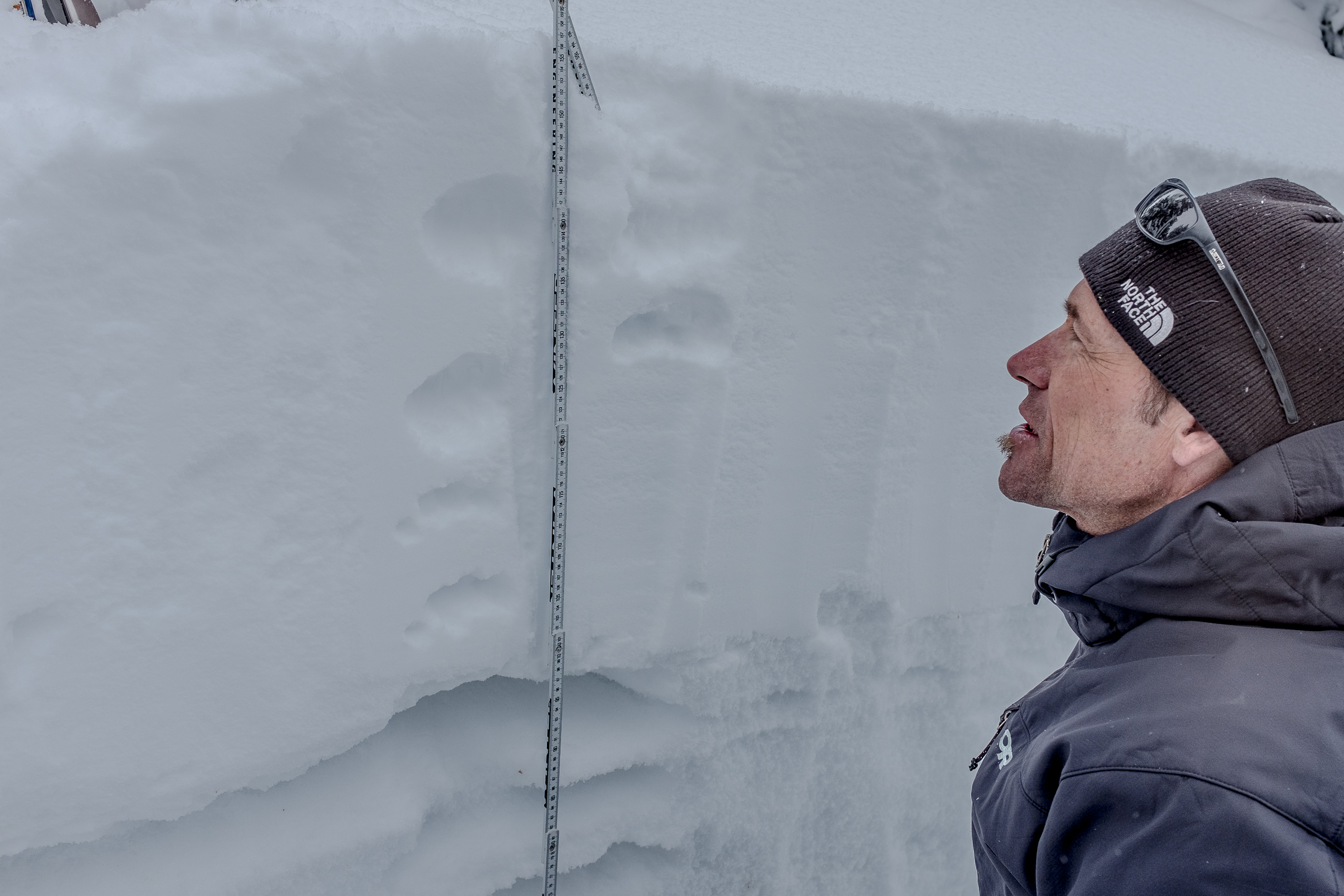Eric Trenbeath is an avalanche forecaster with the U.S. Forest Service’s Utah Avalanche Center for the La Sal and Abajo mountains near Moab. He grew up skiing in the Wasatch Mountains and worked for 10 years with the Alta Ski Patrol.
Trenbeath was one of dozens of first responders to an emergency avalanche call in the La Sal Mountains on Jan. 25 and 26. On Feb. 7, he is delivering a free talk at the Grand County Library called “Danger and Delight: A History of Winter Recreation in the La Sal Mountains,” before he teaches a two-day avalanche training class on Feb. 8 and 9.
The Moab Sun News met with Trenbeath recently to follow up on his work as an avalanche forecaster.
What are you talking about during the Danger and Delight presentation at the library on Feb. 7?
Trenbeath: How terrain, weather and snowpack create a high potential for avalanches in the range. I will talk about the history of recreation in the mountains and how to recreate safely. I’ll be talking for about an hour with time afterwards for questions and answers.
What do you want people to know about winter recreation in the La Sal Mountains that hasn’t been talked about yet?
Trenbeath: Avalanches are dangerous, but they are avoidable. There are times when you can go big, and times to dial it back. Take a class, get some training. Get the gear — beacon, probe and shovel, and learn how to use it. Learn to recognize avalanche terrain and signs of instability, such as collapsing in the snowpack and cracking in the surface. Check the avalanche forecast before you go out and plan your trips accordingly.
What is avalanche terrain?
Trenbeath: Slopes steeper than 30 degrees, which is about like an expert run at a ski area. Can also include gully walls, or steep road banks.
How common are avalanches in the La Sal Mountains? Do avalanches occur all the time?
Trenbeath: Dozens of large and destructive natural avalanches have occurred over the past month. Additional snow loads throughout the month have added more stress, and each storm over the past month has produced natural avalanche activity, with a major natural avalanche cycle occurring on Jan. 18. Natural avalanche activity generally occurs during the peak of the storm, when winds and precipitation intensity are the highest. Some storms produce no natural avalanches, some produce a few. It all depends on the intensity of the storm and the cumulative water weight. A “major natural avalanche cycle” refers to natural avalanches occurring all over the place. Human-triggered avalanches are often not reported, but can occur days or even weeks after the last storm event.
If people want to recreate in the snow, where are some safe areas for them to go?
Trenbeath: Groomed cross-country ski trails are safe. Terrain less than 30 degrees that is not connected to, or underneath, steep slopes is generally considered safe. But it all depends on the forecast and the danger rating. When the danger is rated “Low,” you can generally play on steep terrain, though we love to say, low danger doesn’t mean no danger. On “Moderate” days, you can usually bump it up a bit, as long as you are aware of current problems and know how to recognize signs of instability in the snowpack. When the danger is “Considerable” or higher, avalanche terrain should be avoided.
Is there still time for people to register for the two-day avalanche training on Feb. 8 and 9?
Trenbeath: Yes, people can still register for the training. So far, the class is about half full, but in past years it has usually filled up by now.
For more information about Utah Avalanche Center, visit utahavalanchecenter.org. To register for the Utah Avalanche Center’s Backcountry 101 avalanche course on Feb. 8 and 9 (there is a $150 class fee) email Trenbeath at eric@utahavalanchecenter.org.
For more information about Utah Avalanche Center, visit utahavalanchecenter.org.
To register for the Utah Avalanche Center’s Backcountry 101 avalanche course on Feb. 8 and 9 (there is a $150 class fee) email Trenbeath at eric@utahavalanchecenter.org.
Utah avalanche forecaster Eric Trenbeath explains terrain and danger ratings
“Check the avalanche forecast before you go out and plan your trips accordingly.”





